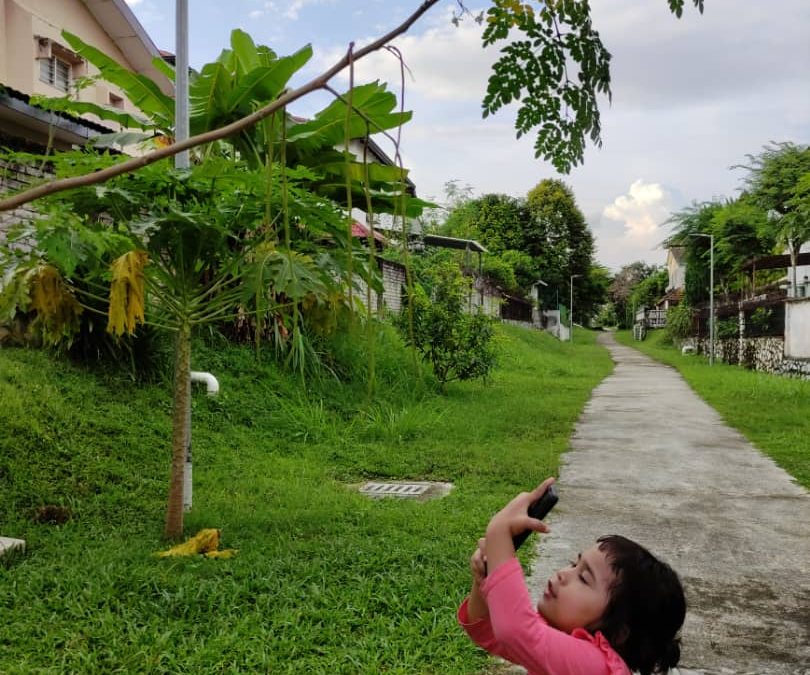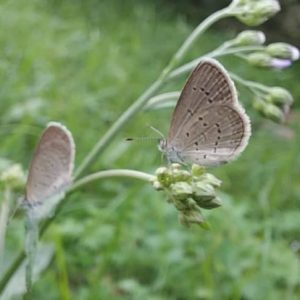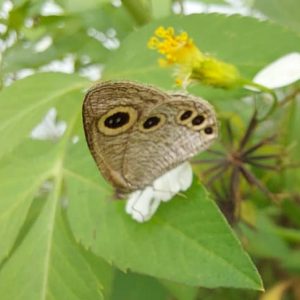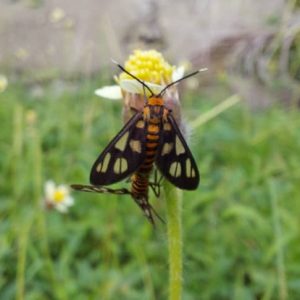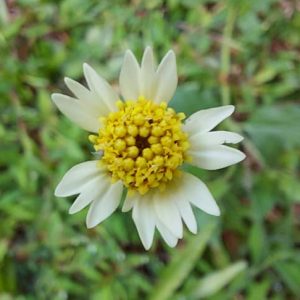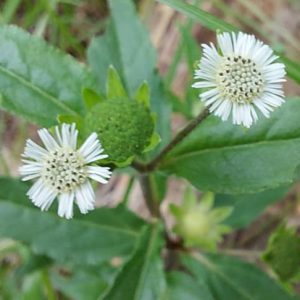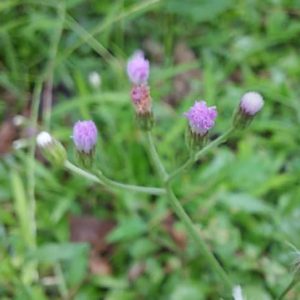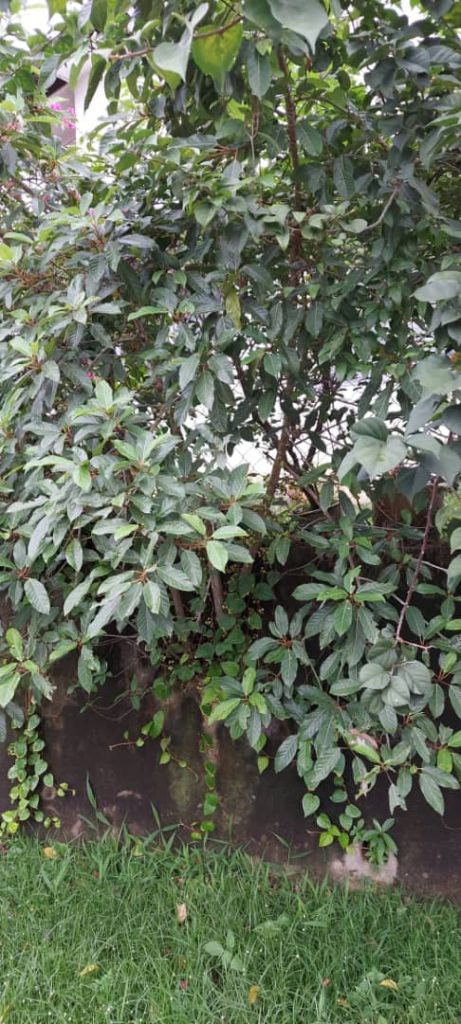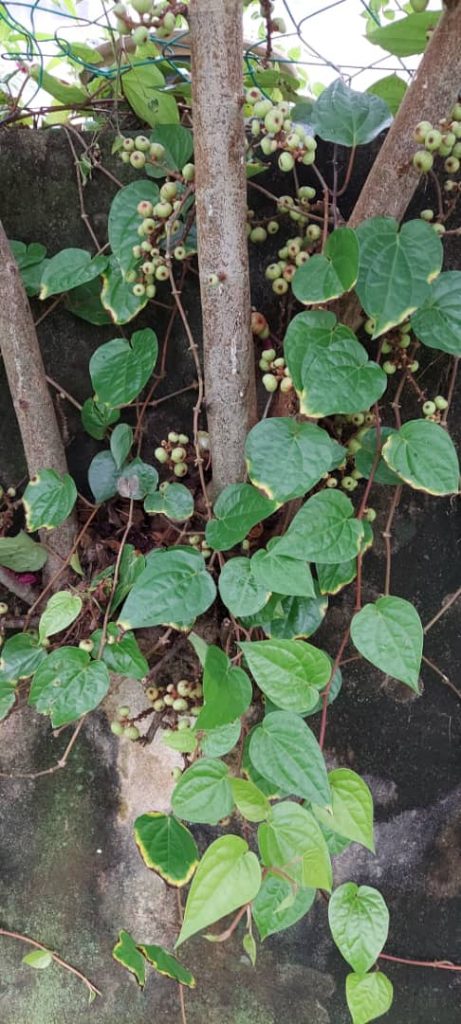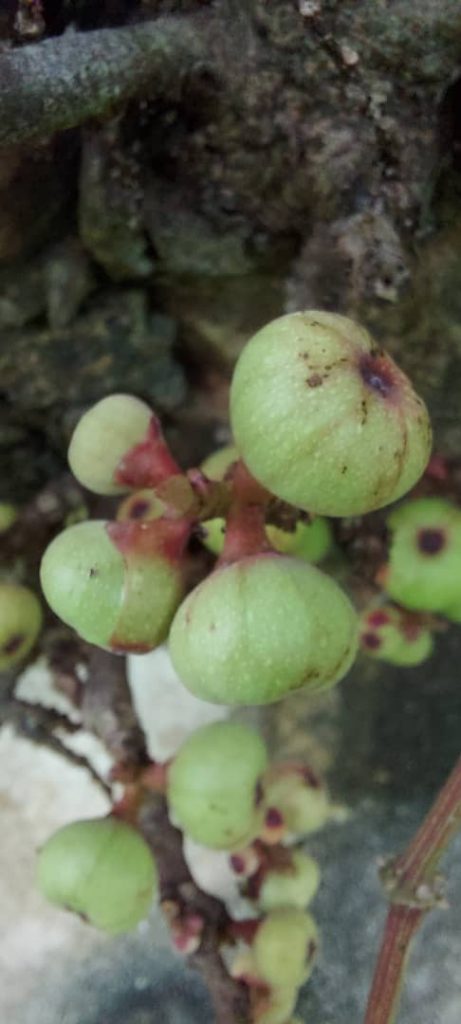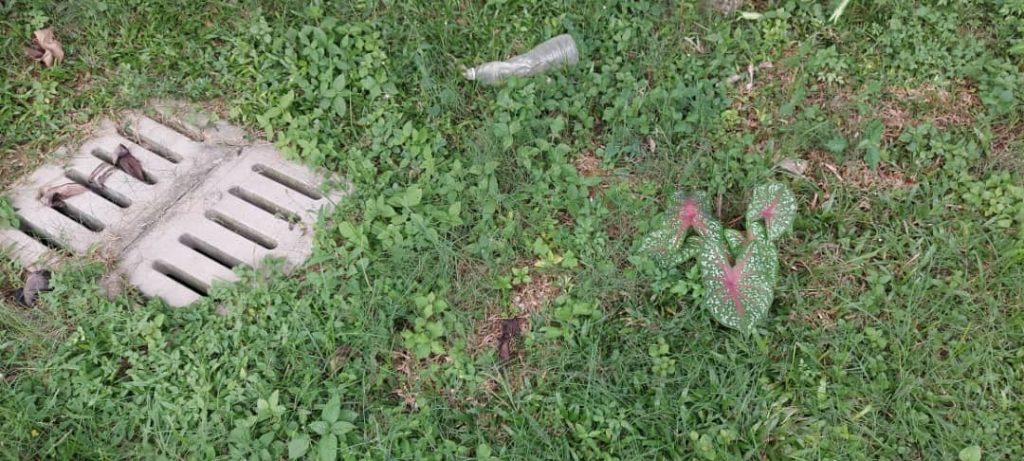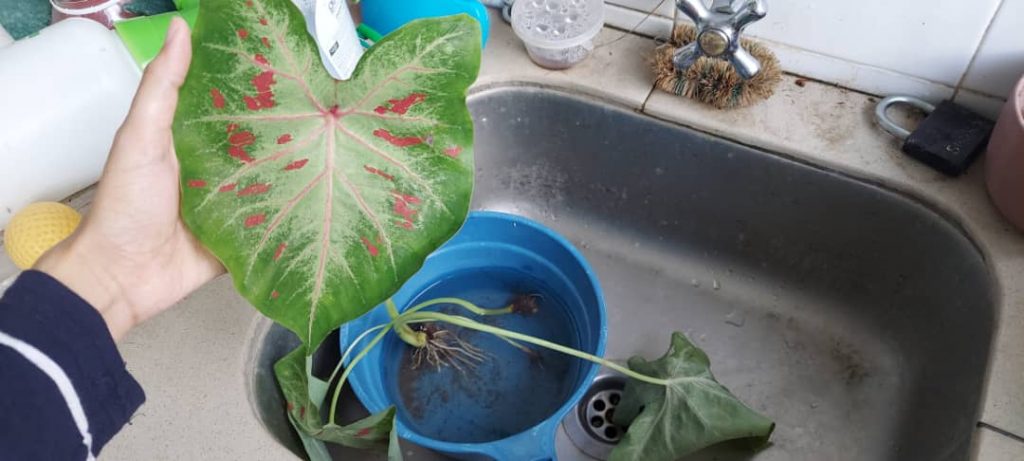After about a week, various types of wildflowers springs back to life again: Tridax Daisy (Tridax procumbens), Little Ironweed (Cyanthillium cinereum), False Daisy (Eclipta prostrata) and many others. The Sensitive Plant/Semalu (Mimosa pudica) could also be found here, but this creeping plant which grows on the same level as grass had survived the mowed lawn. These wildflowers may be tiny and are categorizes as invasive, but they provide a habitat for different kinds of insects here. The butterflies and moth obviously loves them.
Observing this 4-year-old child interact with her lorong belakang rumah, it made me realize these wildflowers are the probably the only flowers that she could pluck and touch freely – without being told that she should not pluck flowers which doesn’t belong to her. This little person would happily collect as many of the ‘sunflowers’ as a gift for her furry animals or put them in vase with water.
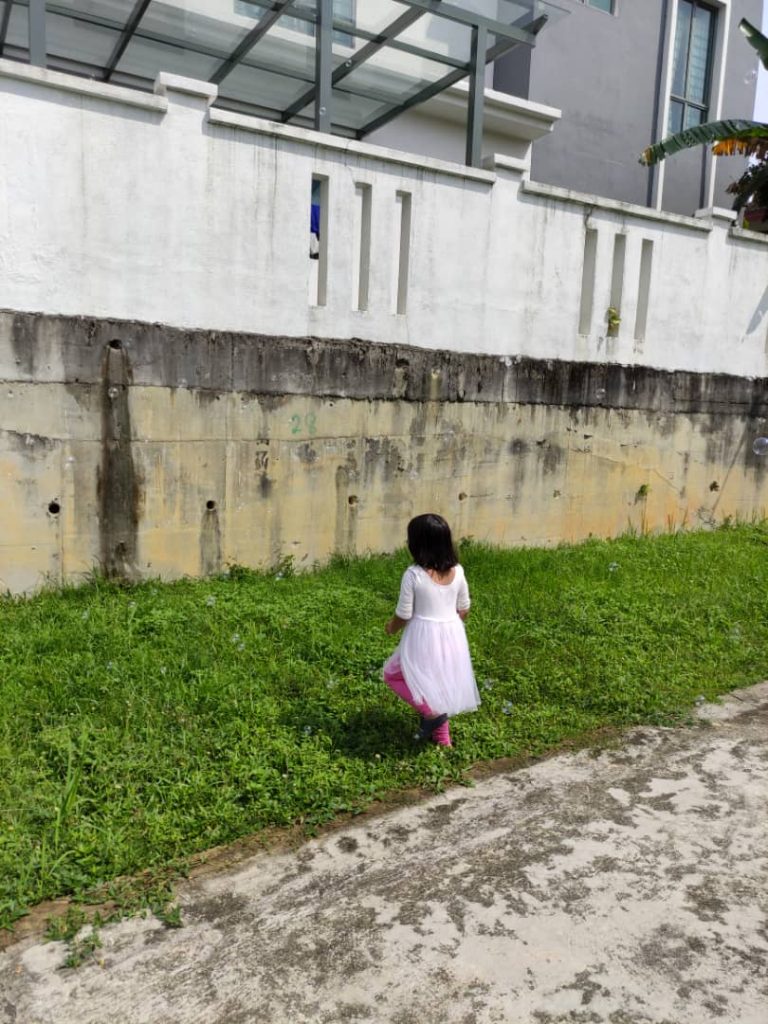
Before this space was transformed into lorong belakang rumah, it was a natural stream with semak and belukar. As a child, I remembered the sound of frogs croaking after it rains… never missing their chance to attract a mate. After the transformation, the sound of frogs disappeared.
Back then, I didn’t get the chance to explore this space due to the fear of the unknown associated with semak. After they bulldozed all the plants and covered the stream with concrete pathway, a snake suddenly entered our home. We’ve taken its home, and now it fears for its life and has nowhere else to go.
These days the lorong is not as wild as it used to be, but still attractive in some way. For instance, a wild, inedible fig can be spotted growing on the back wall of this house. Observe closely, you will notice that this fig tree has no flower, yet it attracts pollinators such as wasp. This is because, the flower is actually located inside its fruit (also called syconium). It’s an amazing showcase of coevolution between figs and wasps where neither could exist without the other. Other types of fig can also be spotted here such as: Sacred Fig (Ficus religiosa) and Weeping Fig (Ficus benjamina).
Spaces like this lorong also becomes an interesting scavenging site for FREE plants that can be brought home:
It is interesting to learn about the different kinds of lorong belakang as outlined in PLAN Malaysia’s planning guidelines and think about how these lorong can play an important role for urban greening and urban biodiversity without compromising its other roles as well: as an escape route, infrastructure and utility installation, and others.

